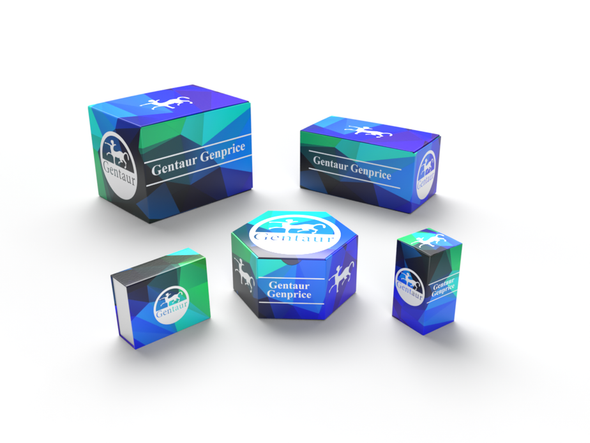BW
c-Kit (phospho-Y936) polyclonal Antibody | BS4638
- SKU:
- BW-BS4638
- Availability:
- Usually ships in 5 working days
Description
c-Kit (phospho-Y936) polyclonal Antibody | BS4638 | Gentaur UK, US & Europe Distribution
Host: Rabbit
Reactivity: Human
Application: WB
Application Range: WB: 1:500~1:1000
Background: c-Kit is a transmembrane tyrosine kinase encoded by the c-Kit proto oncogene. c-Kit acts to regulate a variety of biological responses including cell proliferation, apoptosis, chemotaxis and adhesion. Ligand binding to the extracellular domain leads to autophosphorylation on several tyrosine residues within the cytoplasmic domain, and activation. Mutations in c-Kit have been found to be important for tumor growth and progression in a variety of cancers including mast cell diseases, gastrointestinal stromal tumor, acute myeloid leukemia, Ewing sarcoma and lung cancer. Phosphorylation at tyrosine 721 of c-Kit allows binding and activation of PI3 kinase.
Storage & Stability: Store at 4°C short term. Aliquot and store at -20°C long term. Avoid freeze-thaw cycles.
Specificity: c-Kit (phospho-Y936) polyclonal Antibody detects endogenous levels of c-Kit protein when phosphorylated at Tyr936.
Molecular Weight: ~ 120,145 kDa
Note: For research use only, not for use in diagnostic procedure.
Alternative Names: Mast/stem cell growth factor receptor Kit; SCFR; Piebald trait protein; PBT; Proto-oncogene c-Kit; Tyrosine-protein kinase Kit; p145 c-kit; v-kit Hardy-Zuckerman 4 feline sarcoma viral oncogene homolog; CD117; KIT; SCFR
Immunogen: Synthetic phosphopeptide derived from human c-Kit around the phosphorylation site of Tyr936.
Conjugate: Unconjugated
Modification: Phosphorylation
Purification & Purity: The Antibody was affinity-purified from rabbit antiserum by affinity-chromatography using epitope-specific immunogen and the purity is > 95% (by SDS-PAGE) .
Pathway: Examples of Crosstalk Between Post-translational Modifications,Epigenetic Writers and Erasers of Histones H2A H2B and H4,




![Phospho-KIT (Y936) Antibody [APR05286G] Phospho-KIT (Y936) Antibody [APR05286G]](https://cdn11.bigcommerce.com/s-1rdwiq712m/images/stencil/590x590/products/58091/58395/gentaur-genprice__26005.1661610467__29809.1661628092__75433.1661676199__77988.1661684280__64362.1661692443__19764.1661854638.png?c=1)





